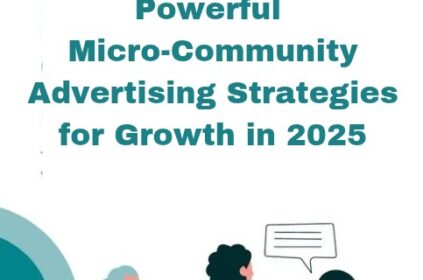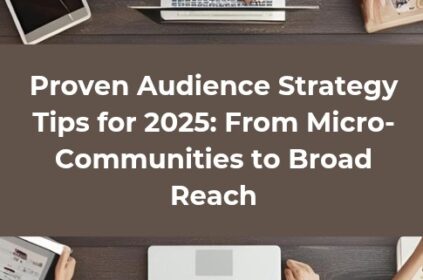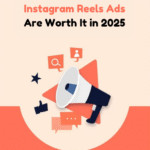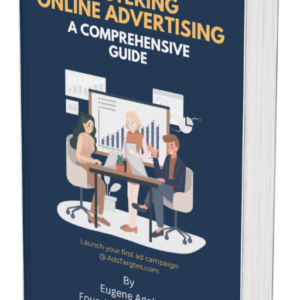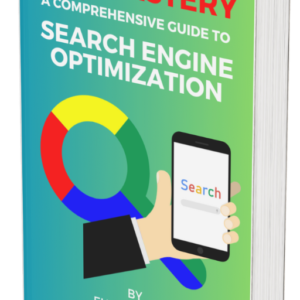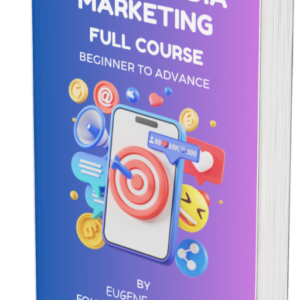Short-form video has quickly become the front line of digital marketing.
With billions of daily views and global reach, platforms like YouTube Shorts are no longer just for creators—they’re a key advertising space for brands.
YouTube Shorts Ads, in particular, have emerged as one of the most effective tools for building awareness through micro-video, delivering concise messages that fit the attention spans of today’s audiences.
In 2025, businesses can no longer afford to ignore the influence of YouTube Shorts.
Unlike traditional long-form ads, Shorts give marketers the opportunity to connect instantly, often within the first few seconds.
This immediacy translates into stronger brand recall, higher engagement, and cost-efficient reach.
Here are a few strategies that can help you out.
Why YouTube Shorts Ads Are Essential for Brand Growth
The shift toward short-form video is undeniable.
Data from Statista shows that more than 66 percent of global internet users watch short-form video weekly, and YouTube Shorts has become one of the most dominant formats.
For marketers, this signals a clear opportunity. YouTube Shorts Ads are not just an add-on to a video strategy—they’re a primary channel for discovery and awareness.
What sets them apart is the ability to deliver bite-sized, memorable content to a massive audience at scale.
While traditional YouTube ads focus on long-form storytelling, Shorts let brands cut directly into the attention span of today’s viewers, which averages only a few seconds.
This makes the creative process different, but when done right, the impact is larger than many long-form campaigns.
The benefits are also quantifiable.
According to Google, YouTube Shorts attract over 2 billion logged-in monthly users, making it one of the largest ad placements in the world.
Pair that with the fact that most users interact through mobile devices, and it’s clear that YouTube Shorts Ads are perfectly positioned for modern attention habits.
By focusing on awareness, brands can take advantage of these micro-videos as a top-of-funnel tool.
They spark initial recognition, drive brand recall, and prepare the ground for deeper engagement.
In 2025, businesses that understand how to align their campaigns with the YouTube Shorts format will consistently outpace those still clinging to longer, static ads.
#1. Crafting Engaging Creatives That Stick
Creating effective YouTube Shorts Ads means designing specifically for the vertical format and short runtime.
Unlike repurposed television or YouTube long-form ads, success here hinges on immediacy.
The first two seconds determine whether someone keeps watching or swipes away. The most effective approach is to present your core value immediately.
Whether it’s showcasing a product benefit, teasing an irresistible offer, or sparking curiosity with a bold statement, clarity is everything.
HubSpot reports that 47 percent of short-form video viewers want content that entertains, but 33 percent say they value information delivered fast.
Music and captions also play a major role. Many Shorts are consumed without sound, so adding concise text overlays ensures messaging isn’t lost.
Meanwhile, trending audio can boost discoverability, making ads feel native to the Shorts environment rather than intrusive interruptions.
A critical distinction of YouTube Shorts Ads is that creative fatigue sets in faster than in longer campaigns.
Since the content is so brief, repetition without variation leads to quick drop-offs.
Rotating creative assets every 10–14 days keeps engagement fresh and prevents wasted impressions.
Brands that invest in a library of micro-variations—slight changes in copy, visuals, or call-to-actions—find more consistent success.
#2. Leveraging Targeting Features for Better Reach
YouTube’s ad platform provides a range of targeting options that help advertisers maximize the potential of YouTube Shorts Ads.
Beyond broad demographic targeting, the platform allows for interest-based, affinity, and in-market audiences.
These targeting layers are critical for awareness-focused campaigns.
For example, in-market audiences let brands reach people already actively searching for similar products, while affinity audiences target individuals with established interests in related categories.
This ensures that micro-videos appear not only in front of large numbers but also in front of the right viewers.
Location targeting has become more powerful as well.
Brands looking to establish regional presence can tailor YouTube Shorts Ads to hyperlocal audiences.
This approach has been shown to increase ad relevance, as Think with Google reports that local relevance can double engagement metrics compared to generalized content.
Another overlooked feature is custom intent targeting. By feeding in keywords your audience is searching for, you align Shorts Ads directly with their current needs.
This drives higher click-through rates and ensures that even brief exposures stick. In 2025, when competition is fierce, precise targeting ensures that awareness campaigns are not just wide-reaching but meaningfully aligned with consumer intent.
#3. Maximizing ROI Through YouTube Analytics
Measuring the success of YouTube Shorts Ads requires more than tracking views.
Awareness is about recognition and recall, which must be paired with performance metrics like view-through rate (VTR), click-through rate (CTR), and cost per thousand impressions (CPM).
YouTube Analytics, integrated with Google Ads, provides insight into how micro-videos perform across audience segments.
Brands can identify where drop-offs occur, whether the creative’s hook is effective, and how targeting impacts results.
One useful strategy is to combine Shorts Ad data with Google Analytics 4.
This setup allows marketers to track whether exposure leads to follow-up actions like site visits, sign-ups, or conversions—even if those actions don’t happen immediately.
Building awareness means nurturing interest, and this cross-platform tracking proves whether impressions are translating into tangible next steps.
Cost efficiency is also improving.
Reports from Emarketer indicate that short-form video ads generally deliver lower CPM compared to other formats, making YouTube Shorts Ads one of the most cost-effective awareness tools available.
By actively monitoring results and reallocating spend to top-performing creatives, marketers reduce waste while scaling reach.
#4. Integrating Shorts Into Broader Campaigns
The most successful YouTube Shorts Ads aren’t isolated; they’re part of an integrated strategy.
Pairing Shorts with long-form YouTube ads, search campaigns, and remarketing builds a cohesive funnel.
While Shorts deliver top-of-funnel exposure, longer videos and retargeting ads nurture those leads toward purchase.
For instance, a brand might launch a Shorts campaign to highlight a new product line, then retarget engaged viewers with detailed product demos or testimonials.
This sequencing keeps audiences moving steadily down the path from awareness to action.
Cross-platform integration is equally vital. Many brands now pair YouTube Shorts Ads with TikTok and Instagram Reels campaigns, creating unified messaging across multiple short-form platforms.
A Nielsen study found that running consistent messaging across multiple video platforms increases ad recall by 32 percent.
This synergy makes Shorts more than just a top-of-funnel tool—it becomes the first step in a comprehensive ecosystem.
In 2025, businesses that fail to integrate Shorts into larger strategies risk underutilizing one of the most powerful awareness drivers available.
#5. Building Awareness With Authentic Storytelling
Even in micro-video format, authenticity matters. Today’s viewers are quick to reject ads that feel overly polished or disconnected from reality.
This is why many brands incorporate user-generated content (UGC) into their YouTube Shorts Ads.
UGC feels native to the platform and mirrors organic Shorts content, which builds trust.
Vogue Business reports that campaigns using UGC see engagement rates 30 percent higher than traditional branded content.
For awareness campaigns, that lift is significant.
Storytelling within a 15-second window requires discipline. Focus on one core message: a key feature, a single benefit, or an emotional trigger.
Trying to pack multiple talking points into such a short timeframe dilutes the impact.
Another effective approach is to use Shorts Ads to spotlight customer experiences. A testimonial condensed into a few seconds can drive strong recognition while reinforcing credibility.
In an era where skepticism about advertising is high, real voices carry more weight than heavily branded scripts.
Ultimately, awareness grows not just from frequency but from resonance.
By leaning on authentic stories, brands ensure that their YouTube Shorts Ads don’t just get watched but remembered.
#6. Scaling Campaigns for Long-Term Impact
Launching a single YouTube Shorts Ads campaign is only the beginning. To maximize impact, scaling requires careful planning and continuous optimization.
Scaling starts with creative testing. A/B testing variations of hooks, visuals, and calls to action identifies which combinations resonate best.
Successful versions can then be scaled with larger budgets. Meanwhile, underperforming versions are retired quickly to avoid wasted spend.
Geographic expansion is another scaling tactic. After proving success in one region, campaigns can be adapted for broader markets while maintaining local nuances.
This phased approach ensures that scaling doesn’t come at the cost of losing relevance.
Long-term impact also depends on consistent frequency. Unlike single-product launches, brand awareness requires repeated exposure over time.
A StackAdapt report shows that consumers typically need multiple touchpoints before recall solidifies.
By sustaining YouTube Shorts Ads campaigns across quarters rather than weeks, brands create lasting impressions.
Finally, aligning Shorts with seasonal peaks ensures that awareness is timed with consumer intent.
Whether it’s holiday shopping, back-to-school, or summer sales, aligning campaigns with demand cycles makes impressions more meaningful.
In 2025, scaling Shorts Ads effectively means treating them not as temporary experiments but as core pillars of ongoing awareness strategy.
#7. Optimizing YouTube Shorts Ads With Sequential Storytelling
Sequential storytelling is often overlooked in short-form content, but it works powerfully when applied to YouTube Shorts Ads.
Instead of focusing on a single micro-video to do all the heavy lifting, sequential storytelling uses multiple ads to build awareness step by step.
The first ad introduces the brand or a problem, the second reveals a solution, and the third showcases proof or benefit.
Each piece is designed to be memorable on its own, yet more impactful when experienced in sequence.
YouTube’s campaign manager allows for ad sequencing, giving marketers the ability to control the order in which viewers encounter their Shorts Ads.
This creates a narrative arc that is rare in short-form advertising, helping brands stay top of mind while also reinforcing recall.
According to Think with Google, sequencing ads can increase ad recall and purchase intent by up to 74 percent compared to one-off campaigns.
By adopting sequential storytelling, brands ensure their YouTube Shorts Ads don’t just create momentary awareness but also reinforce recognition through structured repetition.
It’s a strategy that blends awareness with retention, ensuring viewers not only see your message but also remember it across touchpoints.
The Role of Sound and Music in YouTube Shorts Ads
While visuals grab attention, sound plays a pivotal role in the effectiveness of YouTube Shorts Ads.
In fact, YouTube’s research shows that ads with well-synced audio and visuals have 2.5 times higher brand recall compared to silent ads.
Music, voiceovers, and sound effects work together to shape the emotional tone of an ad, making it more memorable even in a 15-second slot.
However, not all users consume content with sound.
This makes it critical to design for a dual experience: ensuring the ad still delivers its message without sound while enhancing it for those who do listen.
Adding captions, bold on-screen text, and relevant visuals ensures accessibility. At the same time, pairing trending sounds with brand messaging makes ads feel native to the Shorts ecosystem, blending seamlessly with organic content.
Brands that align their creative approach with audio trends often benefit from algorithmic boosts, since popular sounds increase discoverability.
By balancing accessibility with innovation, marketers can maximize the reach and recall of their YouTube Shorts Ads while avoiding wasted impressions on audiences who scroll with their sound muted.
How Brand Consistency Shapes Awareness in Shorts Ads
Consistency is one of the most underutilized drivers of awareness in digital campaigns.
A single creative asset may generate interest, but when a series of YouTube Shorts Ads consistently feature the same color palette, typography, and brand tone, awareness compounds.
A study found that consistent brand presentation across platforms can increase revenue by up to 33 percent—a result that starts with recognition.
In the context of Shorts, where viewers are exposed to countless micro-videos daily, consistency helps distinguish your brand from competitors.
Even subtle visual cues—like a recurring logo placement or a branded intro frame—can condition audiences to recognize content instantly.
This recognition becomes critical when ads are part of multi-touch campaigns, as consistent design creates continuity between awareness and conversion-focused messages.
Marketers often overcomplicate by changing designs too frequently.
While variation is important for combating creative fatigue, a consistent brand anchor ensures that all variations feel connected.
In 2025, maintaining a strong brand identity across YouTube Shorts Ads is not just a design choice but a strategic necessity for building lasting awareness in crowded digital environments.
Measuring Long-Term Awareness Beyond Immediate Metrics
Many campaigns judge success based on short-term metrics like impressions or clicks, but the true impact of YouTube Shorts Ads lies in long-term brand awareness.
According to Nielsen, ad recall and brand association often continue to grow weeks after exposure, especially when campaigns are sustained over time.
Measuring this requires a broader perspective. Instead of relying solely on immediate engagement, marketers should track indicators like search lift, brand mention volume, and repeat exposure rates.
Surveys and brand lift studies can also reveal how YouTube Shorts Ads shift consumer perception beyond direct clicks.
For example, Google Ads offers Brand Lift measurement tools that assess awareness, ad recall, and consideration in real time.
The key insight is that awareness builds cumulatively.
Even if one micro-video doesn’t drive conversions instantly, repeated exposure across multiple Shorts strengthens recognition and trust.
By adopting measurement models that extend beyond campaign end dates, brands gain a more accurate view of how YouTube Shorts Ads contribute to market share and mindshare.
In competitive industries, this long-term awareness advantage is often the deciding factor in consumer choice.
Conclusion
YouTube Shorts Ads have transformed how brands build awareness.
Their ability to deliver sharp, memorable impressions to billions of users makes them one of the most effective tools in 2025.
By focusing on creative clarity, precise targeting, authentic storytelling, and integration into broader campaigns, brands can turn micro-videos into powerful awareness drivers.
The path forward is clear: treat YouTube Shorts Ads not as side experiments but as essential elements of every awareness strategy.
The businesses that adapt early will set themselves apart in crowded markets, while those who delay risk missing out on one of the most cost-effective, high-reach formats available today.




